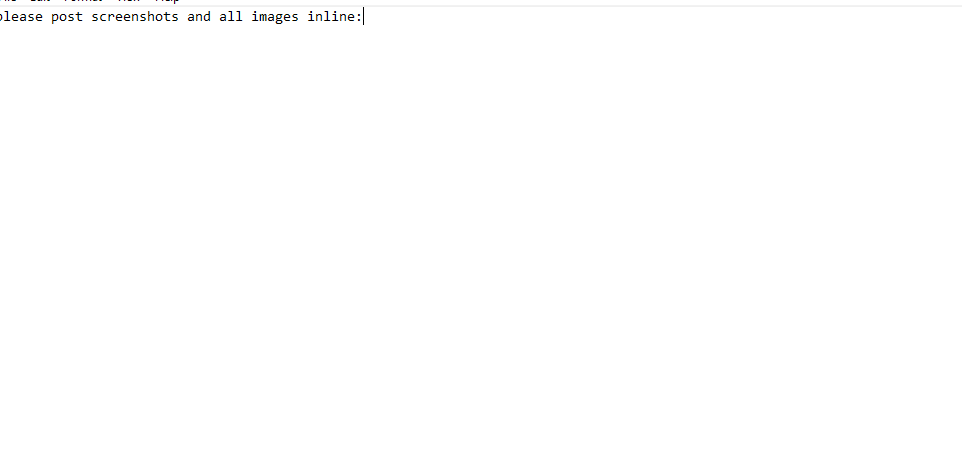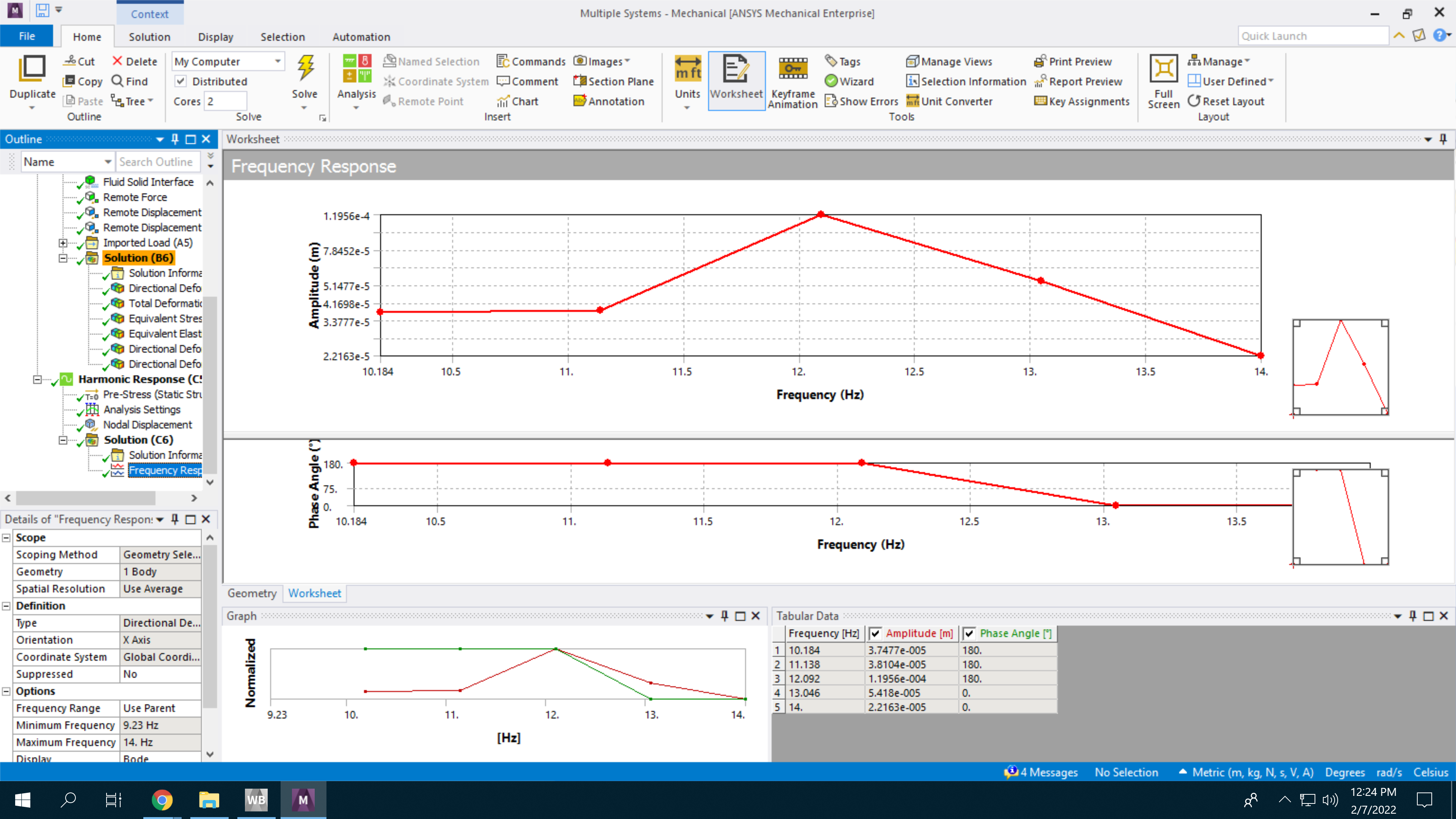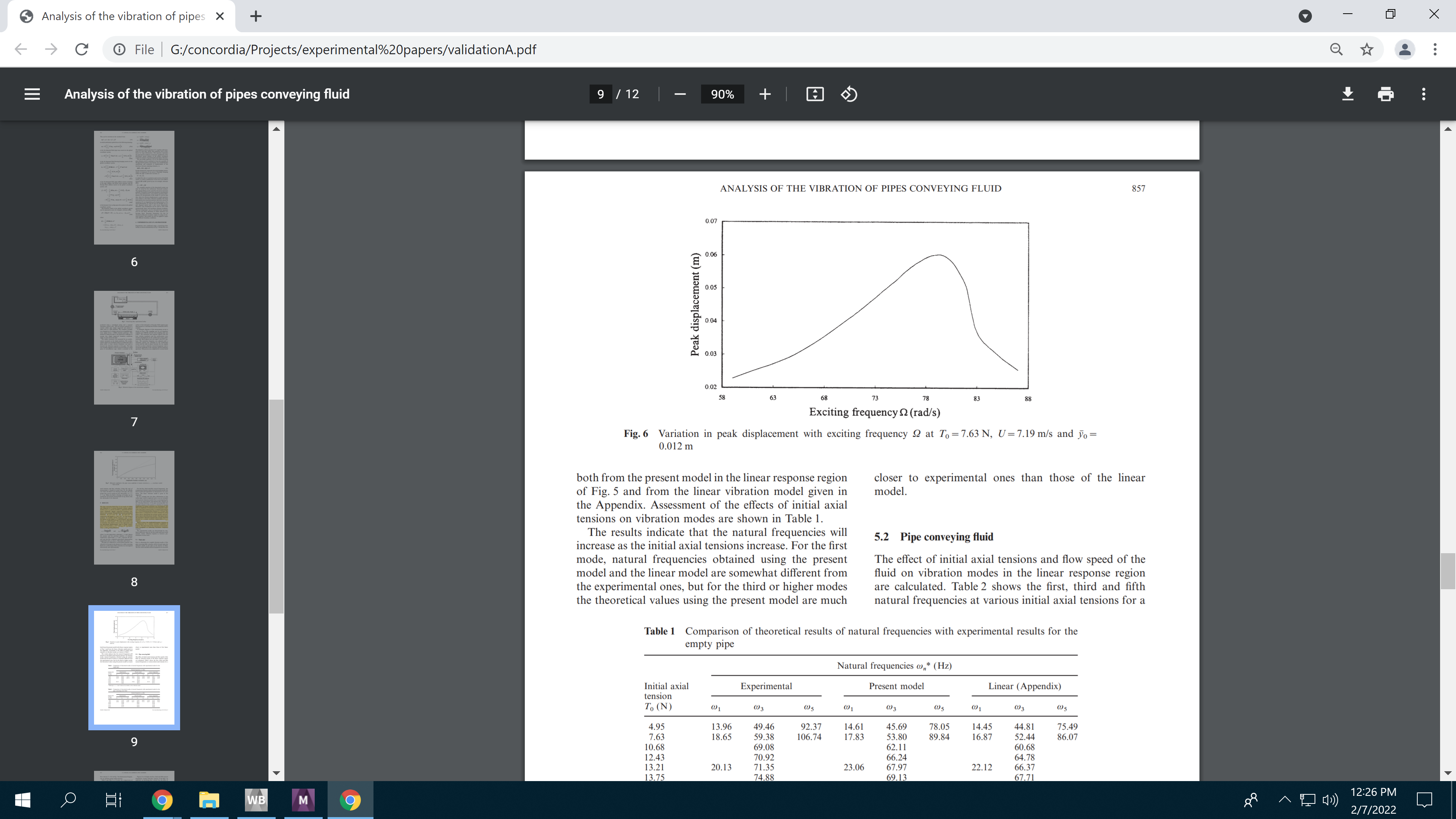TAGGED: peteroznewman
-
-
February 10, 2022 at 6:11 pm
kimkarimi9574
SubscriberHi there,
I'm trying to validate my settings with attached paper. I get inaccurate results and I don't where is the problem. could you please help me out. In fluent part, the settings include gravity -9.81 in y dir, k-epsilon model with enhanced wall treatment for viscosity, water as fluid and steel as solid (the solid part in article was rubber, so I selected steel then I changed the properties to rubber properties) for materials, inlet 7.19m/s and 300K - inner wall with coupled thermal condition- outter wall 300K for BC.
In static structural part, the settings include gravity -9.81 in y dir, fluid solid interface, remote force of 7.63N and remote displacement of 0-free-0-free-free-free condition at the left end, remote displacement of 0-0-0-0-0-0 at the right end.
In harmonic response part, the settings include prestress from static structural, min 58(rad/s)- max 88(rad/s)- solution intervals 5 for frequency, nodal displacement of 0.012m in y dir at the left end for harmonic excitation.
for these settings I got the attached results.
thanks a million!
February 11, 2022 at 5:08 pmAshish Khemka
Forum Moderator
Ansys employees cannot download the attachments. If you can share the snapshots directly in the post and the details of what you are trying to achieve and what you have modeled - it will be useful and easier for us to comment.
Regards Ashish Khemka
February 11, 2022 at 5:40 pmkimkarimi9574
Subscriber
I'm trying to get amplitude-frequency plot of a pipe conveying fluid. Couldn't you open the screenshots aswell? Because 3 last files are images.
February 14, 2022 at 12:43 pmAshish Khemka
Forum Moderator
We are not allowed to download the files.
Regards Ashish Khemka
February 14, 2022 at 12:54 pmErKo
Ansys EmployeeHi
PLease post them in-line like below:

As we said before to see the change in eigen-frequencies and response due to the flow in a pipe that is conveying fluid (so dynamic beam bending differential equation + Centripetal and Coriolis terms due to fluid flow) we just need a vibroacoustic (acoustic harmonic system ) analysis with structure (pipe) and fluid (water say), and we need to add the BF,ALL,VMEN,,, command to the acoustic nodes, for the mean flow in the acoustics - of course if the amplitudes are high and you have some nonlinear effects then this approach (vibroacoustic - linear theory) will not work.
Hope this helps:
So nonlinear vibrations (say high amplitudes) -> 2 way FSI (E.g., Fluent+Transient Structural Mechanical)
Linear vibrations (small amplitude vibrations) -> vibroacoustics.
All the best
PS:If you are using Fluent/CFD to mechanical coupling and why (due to nonlinear vibrations), then it is better to post under the fluids forum also.
February 14, 2022 at 2:32 pmFebruary 14, 2022 at 2:35 pmErKo
Ansys EmployeeNo worries at all - we can not see exactly what you want to do but we said if it is nonlinear dynamic effects or one is just looking into linear (so effect of fluid flow on vibration) then these are the two options that you can use for a fluid conveying pipe:
So nonlinear vibration effects on fluid conveying pipe (say high amplitudes) -> 2 way FSI (E.g., Fluent+Transient Structural Mechanical - you can not use Harmonic since that is linear analysis)
Linear vibrations for fluid conveying pipes (small amplitude vibrations) -> vibroacoustics + BF,ALL,VMEN command
using the harmonic acoustic system - but you have nonlinear effects then we can not use the linear vibrations approach only this is what one can try and use:
2 way FSI (E.g., Fluent+Transient Structural Mechanical (large deflections on) - you can not use Harmonic since that is linear analysis)
All the best
Erik
February 14, 2022 at 2:38 pmkimkarimi9574
Subscriber
Ok, then I try acoustic.
Thank you very much!
February 14, 2022 at 2:41 pmErKo
Ansys Employee
No we can not use acoustics as we said since there are nonlinear effects here so we have nonlinearities due to large amplitudes of vibration here. In the response shown in the second image above labelled Fig.6 one can see probably such nonlinear effect being present.
So:
Linear vibrations for fluid conveying pipes (small amplitude vibrations) -> vibroacoustics + BF,ALL,VMEN command
Can not be used here!
so you need to:
Nonlinear vibration effects on fluid conveying pipe (say high amplitudes) -> the only option that might be able to capture this is a 2 way FSI (E.g., Fluent+Transient Structural Mechanical (with large deflections))
SO a full 2 way FSI analysis as shown here:
February 14, 2022 at 2:57 pmErKo
Ansys EmployeeHi
See my response above - so the only option to try (not sure if it will capture it) and model this is:
a 2 way FSI (E.g., Fluent+Transient Structural Mechanical (with large deflections)-you can not use Harmonic Analysis since that is a linear analysis so we need a Transient Structural coupled to Fluent)
SO a full 2 way FSI analysis as shown here:

February 14, 2022 at 3:10 pmkimkarimi9574
Subscriber
Ok, so I'll try with transient structural. Thanks a million!
February 14, 2022 at 3:10 pmkimkarimi9574
Subscriber
February 14, 2022 at 3:22 pmErKo
Ansys EmployeeYes, it will be very hard but you can try - as always do not forget to activate for large deflections in the transient structural.
All the best of luck
Erik
Viewing 12 reply threads- The topic ‘Inaccurate results’ is closed to new replies.
Innovation SpaceTrending discussions- LPBF Simulation of dissimilar materials in ANSYS mechanical (Thermal Transient)
- Real Life Example of a non-symmetric eigenvalue problem
- How can the results of Pressures and Motions for all elements be obtained?
- BackGround Color
- Contact stiffness too big
- Element Birth and Death
- Python-Script to Export all Children of a Solution Tree
- Which equations and in what form are valid for defining excitations?
Top Contributors-
4597
-
1495
-
1386
-
1209
-
1021
Top Rated Tags© 2025 Copyright ANSYS, Inc. All rights reserved.
Ansys does not support the usage of unauthorized Ansys software. Please visit www.ansys.com to obtain an official distribution.
-














